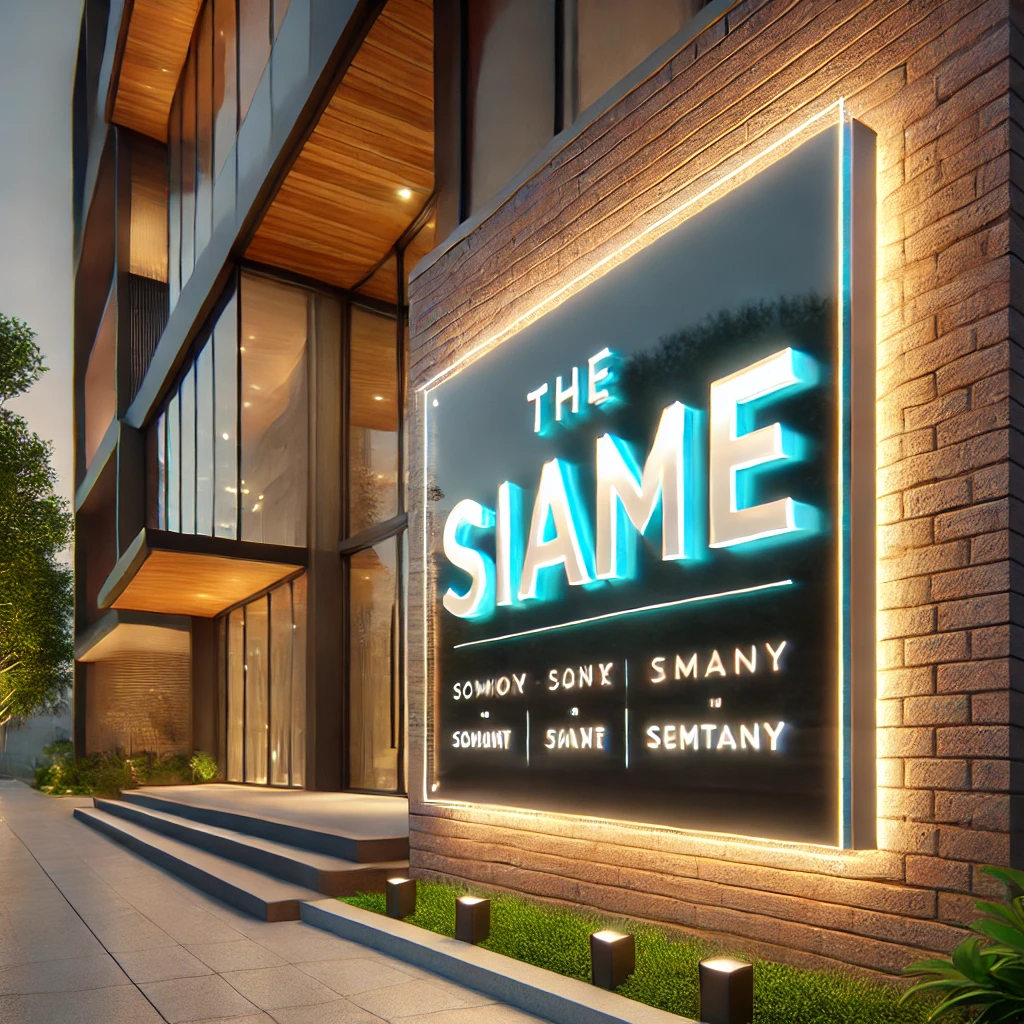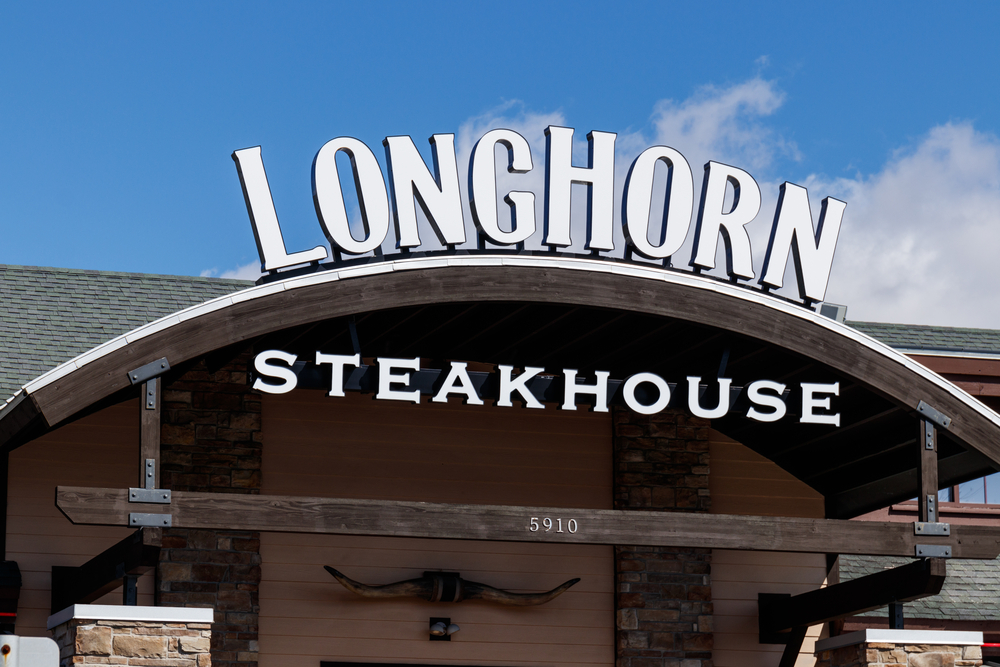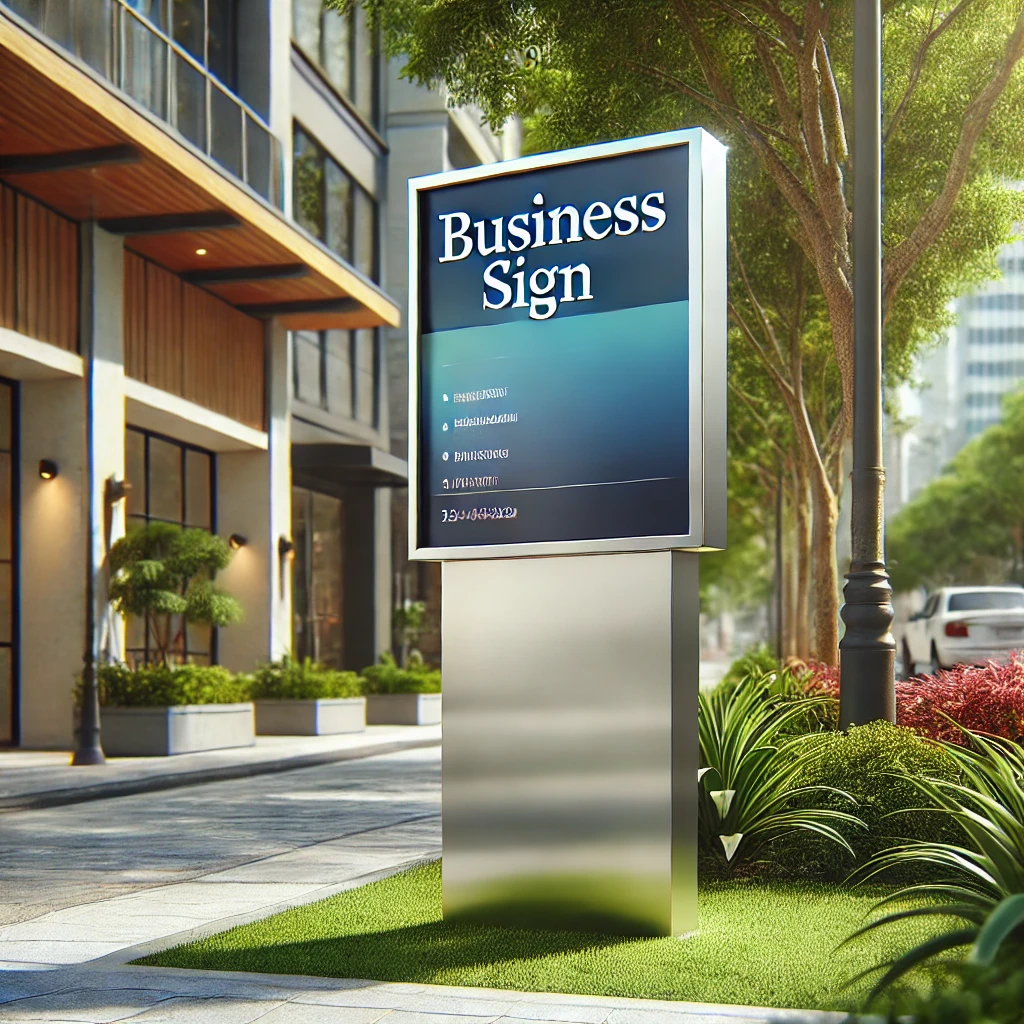Your business’s outdoor signage is one of the most important elements of your business’s branding. It’s the first thing people see, so it needs to make a great impression while standing up to the elements. Choosing the right materials is key to ensuring your sign remains durable, attractive, and functional for years to come.
At Tupp Signs, we understand that choosing the best sign materials can be overwhelming. This guide will help you make informed decisions about the materials that will keep your sign looking great over time.
Key Takeaways
- Choosing the right materials for outdoor signage ensures durability and protection against weather elements like rain, UV rays, and wind.
- Aluminum is durable and lightweight, making it ideal for most climates, though it can dent.
- Acrylic offers a sleek look and UV resistance but can scratch easily.
- PVC is cost-effective and great for graphics but may warp in extreme heat.
- For long-lasting signage, consider climate, appearance, and maintenance, and consult a professional like Tupp Signs for expert advice.
Why Does Material Choice Matters?
Prior to ordering a sign for your business, you need to carefully consider the materials that are going to be used. Why? Outdoor signs face constant exposure to harsh conditions like rain, wind, UV rays, and temperature fluctuations. The wrong material can lead to early deterioration, fading, or structural damage, forcing you to replace the sign sooner than expected. Choosing the right materials will protect your investment and keep your signage vibrant and impactful.

What are Popular Outdoor Sign Materials?
Now that you know why material choice matters, let’s look at the most durable and commonly used materials for outdoor signage:
Aluminum
Aluminum is a top choice for outdoor signage due to its durability, lightweight nature, and resistance to rust and corrosion. It can withstand harsh weather conditions and is often used for everything from small directional signs to large commercial signs. Aluminum can also be easily customized with different finishes and colors, making it both practical and visually appealing.
The only downside to aluminum? It’s not impact-resistant and will dent if hit with force.
Acrylic
Acrylic signs are known for their sleek, modern look. This plastic material is highly durable and resistant to both moisture and UV rays, which helps prevent fading and discoloration. Acrylic is often used for illuminated signs or backlit displays, giving businesses a polished and professional appearance.
Acrylic is prone to scratching, so consider the location and proximity to trees and other objects that may cause damage.
PVC (Polyvinyl Chloride)
PVC is a strong plastic material often used for outdoor signs, particularly for those with vibrant, printed graphics. It’s lightweight, cost-effective, and holds up well against weather exposure. However, in extreme heat, PVC may warp, so it’s best used in areas with moderate climates.
Wood
Wooden signs give a rustic, classic appeal that works well for certain business types, especially in quaint or historic areas. Treated wood can last for years outdoors, though it requires regular maintenance, such as sealing, to prevent rotting, warping, or insect damage.
High-Density Urethane (HDU)
HDU is a durable and weather-resistant material that is often used as a substitute for wood. It mimics the look of wood but is less prone to cracking, rotting, or warping. HDU is also ideal for intricate designs and dimensional lettering.
The pros at Tupp Signs recommend HDU for monument signs, as HDU is aesthetically-pleasing. The downside is that HDU is a bit more expensive than other materials.
Statistics on Outdoor Signage Materials and Durability
-
Material Longevity:
- Aluminum signs can last up to 10-15 years with minimal maintenance due to their rust-resistant properties.
- Acrylic signs have a typical lifespan of 5-10 years, depending on their exposure to sunlight and physical wear.
- HDU (High-Density Urethane) signs can last 10-20 years with proper care, making them one of the most durable options.
- PVC signs last 3-5 years in harsh weather but can exceed 8 years in milder climates.
-
Weather Resistance:
- UV-resistant coatings can extend the life of outdoor signs by up to 50%.
- Signs in coastal areas face up to 50% faster degradation due to salt air and humidity if materials like untreated wood are used.
- Approximately 30% of sign replacements are due to weather-related damage, such as fading, rust, or warping.
-
Cost vs. Durability:
- Aluminum signs are 40% more cost-effective over a 10-year period than other materials due to their low maintenance requirements.
- PVC signs are 20-30% cheaper upfront, but they often require replacement sooner than aluminum or HDU.
-
Environmental Impact:
- Recycling rates for aluminum exceed 85%, making it an eco-friendly choice.
- HDU signs are 95% recyclable, while PVC signs are considered less environmentally friendly due to lower recyclability.
-
Market Trends:
- Businesses with professional, high-quality signage see a 20% increase in walk-in traffic compared to those with poorly maintained signs.
- 76% of consumers say they have entered a store or business based on its signage alone.
- 68% of potential customers believe signage reflects the quality of a business’s products or services.
-
Climate Impact on Material Choice:
- Businesses in hot climates report 30% more warping issues with PVC signs than those in moderate climates.
- Acrylic signs exposed to constant sunlight can experience up to 20% more fading over five years compared to shaded installations.

How to Choose the Right Material for Long-Lasting Outdoor Signage
When selecting the best material for your outdoor sign, you want to consider the climate, longevity of the material, appearance, and maintenance. Each of these factors will impact your signage.
The climate may be harsh, particularly near the coastline. Signs in harsh climates are going to need extra protection against moisture, wind, or extreme heat. Otherwise, the materials will have less longevity and durability. So also choose materials that are known to resist certain types of climate. For example, if you get a lot of rain, choose materials that are resistant to moisture.
Also consider the appearance. How will the aesthetics of the material enhance your brand’s image? Some materials also require regular upkeep, so factor in how much maintenance you’re willing to commit to.
Contact a Delaware Sign Company to Learn More
Choosing the right materials is crucial for ensuring the longevity and effectiveness of your outdoor signage. There are many options, so weigh the pros and cons carefully before making a decision. You should also consider speaking to a professional sign company in Delaware like Tupp Signs. At Tupp Signs, we specialize in helping businesses find the perfect sign material for their needs. Our professional and creative team can assist you in designing, installing, and maintaining durable outdoor signs that make a lasting impression.
Contact us today to get started on crafting the perfect sign for your business!


